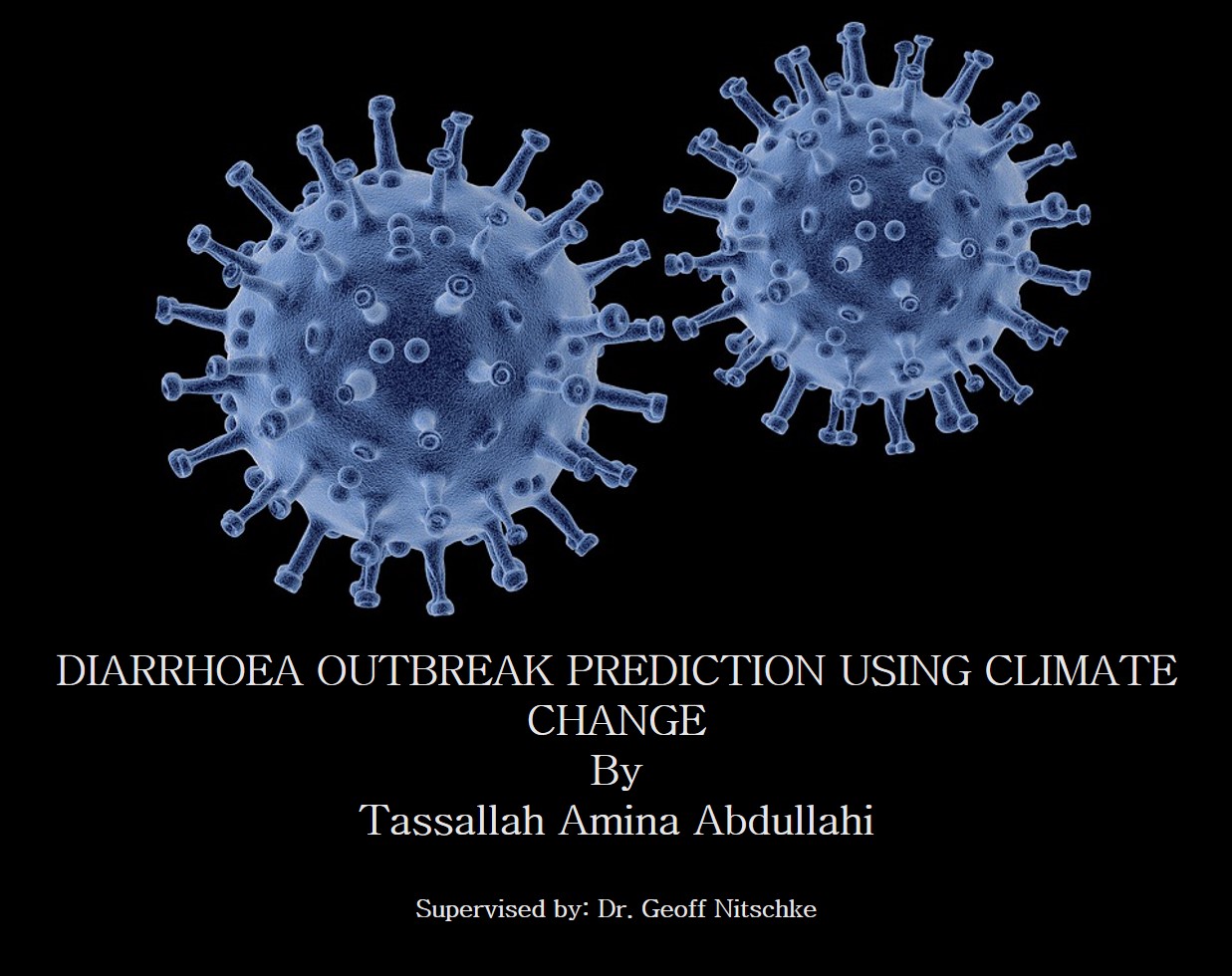Talk to us
No meetings are currently scheduled.
Diarrhoea is a leading cause of morbidity and mortality on a global scale. In South Africa, it is the 3rd leading cause of death for children under five and 8th most preeminent cause of death in individuals of all ages. Investigations have shown that the incidence of diarrhoea varies greatly with seasons and global climate change is expected to increase its risk. The South African region is a climate hotspot and will experience increase in frequency and magnitude of extreme events such as drought, heat waves etc. These events have the potential to increase communicable diseases such as diarrhea. Currently, possible threat is usually identified when there is an increased rate of hospitalizations due to the disease. Thus, outbreaks are predicted only when there is an epidemic. Machine learning (ML) algorithms can help in detecting anomalies by reviewing the volume of data collected in health centres. Recently, various ML techniques such as Artificial neural networks (ANN) and Support vector machines (SVM) have been used in developing predictive and diagnostic models for complex problems. They have also been widely used in the medical and health field for diagnosis and disease prediction. In Southern Africa, little is known about modelling the impact of climate change on diarrhoea with machine learning methods. Thus, by adopting ML techniques, we may be able to establish an early-warning system for diarrhoea outbreak in the various provinces incorporating climate information. In this study, two Deep learning techniques (Convolutional Neural Networks and Long-Short term Memory Networks) and a Support Vector Machine were adopted to predict daily diarrhoea cases by incorporating climate information. To augment the dataset we had available, we used Generative Adversarial Networks to generate synthetic data. The results of the study showed that all three ML methods were appropriate for predicting daily diarrhoea cases with respect to the selected climate variables in each South African province. The ML methods were all able to yield low and similar RMSE. However, the level of accuracy for each model varied across the different experiments. Over all experiments, the deep learning models performed best.
Images

